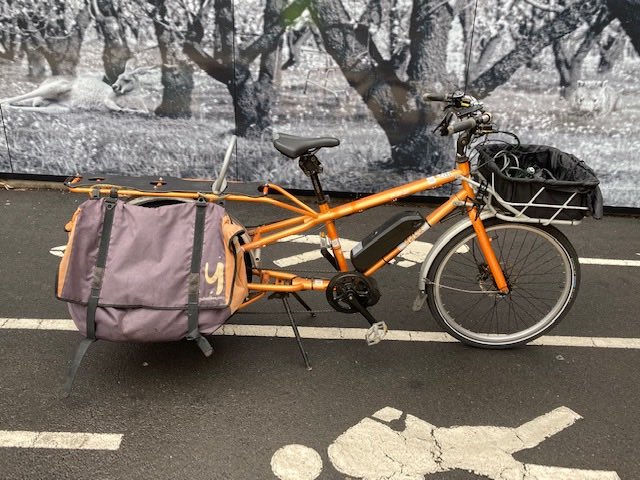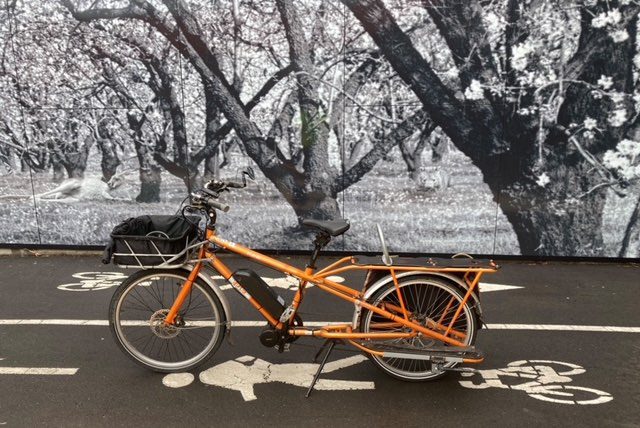There’s a class of electric vehicles which is largely overlooked yet which most people can afford, are available today, are very cheap to run and are just so darned fun.
Electric bikes. Ebikes. Specifically: electric cargo bikes.
Ten years ago, it came as a revelation to me that bikes can be much more than a way to get from A to B or to get fit. Some bikes can also carry a lot of stuff and are really practical in daily life: dropping kids off at school, doing the shopping and commuting to work with lots of gear.
“Cargo bikes” are designed to haul stuff. There are many different types of them including “box bikes” (with a cargo box in front of the rider), “longtails” (with long strong frames to carry cargo behind the rider) and “midtails” (similar to longtails but shorter).
When combined with an electric motor, a relatively heavy cargo bike can carry lots of stuff a long way, quickly and enjoyably. It’s the opposite of road racing bikes, which are engineered to be lightweight and are great for speed and fitness but are fairly impractical for many everyday tasks. Cargo bikers don’t normally wear lycra.
My cargo bike of choice is a Yuba Mundo longtail. It rides like a regular bike but it can carry up to 200 kg of cargo. It’s an absolute beast. I’ve had it for 10 years and ride it around 3,000 km per year.
I started with a “hub motor” and a smallish battery but I recently upgraded to a “mid drive motor” and a much larger battery. Now I can travel much further and faster, which makes it even more fun to ride and even more practical as a car alterative. In reality I do still drive a car occasionally, but the vast majority of my personal transport is via my electric cargo bike.
I’m convinced that ebikes, and specifically electric cargo bikes, are a key part of personal sustainability. Compared to an electric car like a Tesla Model 3, they are a tiny fraction of the cost, they consume a tiny fraction of the energy per kilometre, they have a tiny fraction of embodied energy, they don’t require registration or a driver’s licence and they are readily available.
Obviously this is not comparing apples with apples, and in practice we need a variety of vehicles for different types of trips. But much of our personal transport can use electrified bikes.

If you want an ebike, you don’t necessarily need to buy an expensive new one from a bike store. If you have an existing bike which you like riding, you can electrify it. There are many kits available and people who can fit the kits to your bike, and there are many videos online to show you how to install kits yourself.
If you’d like to learn more about cargo bikes, this movie Motherload is an excellent place to start: https://lnkd.in/gGgmMMR.
If you’d like to learn about fitting ebike kits (especially mid drive motors such as the Bafang BBS02 or BBSHD) to existing bikes, I’d suggest that you dip into the videos by Johnny NerdOut: https://lnkd.in/gaCSP9X.
Ride on!
Andrew Dickson is Development Manager, Green Hydrogen and Ammonia Projects at CWP Global. His article was first published on LinkedIn, reproduced with permission of the author.

